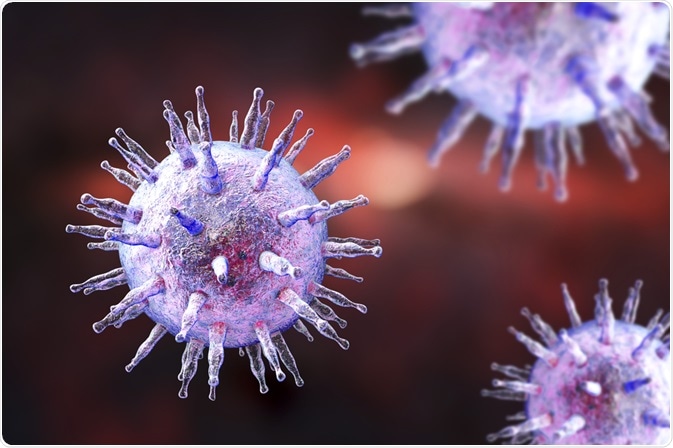The need to develop the modeling of human diseases to understand their molecular mechanisms has led scientists to introduce the concept of “humanizing” mice. Although this is a broad term with various meanings, it usually refers to the insertion of a human element such as a specific gene, or a locus into mice, generating humanized mice.

Image Credit: unoL/Shutterstock.com
For a long time, scientists have used chimpanzees to fill the gap between rodent models and humans. Yet, the use of chimpanzees in clinical trials and biomedical research has been stopped in different regions in the world such as Europe and the USA. As a result, humanized mice models as sophisticated small animal models that are more closely similar to human biological systems come into the light.
Humanized mouse model technologies
In the early 2000s, the introduction of immunodeficient mice, which are mice engrafted with functional human cells and tissues, is considered to be a breakthrough discovery in the study of human diseases. During this time, scientists were able to develop immunodeficient mice bearing mutations in the IL2 receptor common gamma chain (IL2rgnull). In general, there are three technologies for engrafting human immune systems into immunodeficient IL2rgnull mice.
The first model is Hu-PBL-SCID, which is produced via injection of human peripheral blood white blood cells, is efficient in studying the function of human T cells in vivo. The limitation of this model is that it has a short experimental window. This may be attributed to the development of lethal xenogeneic graft-versus-host disease within four to eight weeks. The second model is Hu-SRC-SCID, which is produced via intrafemoral injection of human SCID repopulating cells, supports engraftment of a complete human immune system.
The third model is the “BLT” model, referring to the bone marrow/liver/thymus, which is produced via transplantation of human fetal liver and thymus under the kidney capsule and IV injection of autologous fetal liver hematopoietic stem cells (HSCs). This model supports the development of all lineages of human hematopoietic cells.
BLT models develop a robust mucosal human immune system and the human T cells are educated in an autologous human thymus and are HLA-restricted. The limitation of this model is that the mice develop a wasting graft-versus-host disease-like syndrome, which limits the experiment time window. There is no ideal model; each one has its pros and cons so scientists should choose the best model according to their specific biological experiments.
Applications to human diseases
One of the most important applications of humanized mouse models is studying HIV because these models can mimic human HIV infections, showing depletion of CD4+ T cells, high levels of viremia, and persistent latent virus reservoir.
Few laboratories use the Hu-SRC-SCID model for studying HIV, but the majority use the BLT model because of the higher level of engraftment of the human mucosal system allowing studying of rectal and vaginal HIV transmission routes. These humanized mouse models have supported the testing of different prophylactic drugs, anti-HIV antibodies, and cellular therapies for inhibition of HIV replication and clearance.
There are no current effective vaccines against dengue, which is a flavivirus that is transmitted via mosquitoes and can cause life-threatening dengue hemorrhagic fever or dengue shock syndrome. BLT and HSC-engrafted models of humanized mice support dengue virus infection with the ability to detect the virus in the liver, spleen, and bone marrow as well as the development of symptoms similar to what could appear in human infection.
Epstein-Barr virus (EBV) infects human epithelial cells and B cells, suggesting the use of humanized mouse models for in vivo study of EBV. In both the Hu-PBL-SCID and Hu-SRC-SCID models, recent studies reported the development of EBV-induced lymphoproliferative disorders and tumors. HLA class I-dependent CD8 T cell responses developed in both HSC-engrafted and BLT mice models.
Mycobacterium tuberculosis, which is the causative agent for tuberculosis, mainly attacks the lungs with the development of characteristic granuloma. Although mouse models of tuberculosis usually did not form granulomas, HSC-engrafted NSG mice successfully formed granuloma-like structures following infection with mycobacterium bovis, a bacterium that is related to M. tuberculosis.
In conclusion, humanized mice models aid in the understanding of the pathogenesis and treatment of human bacterial and viral infections.

Image Credit: Kateryna Kon/Shutterstock.com
References
- Akkina, R., Allam, A., Balazs, A.B., Blankson, J.N., Burnett, J.C., Casares, S., Garcia, J.V., Hasenkrug, K.J., Kashanchi, F., Kitchen, S.G. and Klein, F., 2016. Improvements and limitations of humanized mouse models for HIV research: NIH/NIAID “meet the experts” 2015 workshop summary. AIDS research and human retroviruses, 32(2), pp.109-119.
- Allen, T.M., Brehm, M.A., Bridges, S., Ferguson, S., Kumar, P., Mirochnitchenko, O., Palucka, K., Pelanda, R., Sanders-Beer, B., Shultz, L.D. and Su, L., 2019. Humanized immune system mouse models: progress, challenges, and opportunities. Nature immunology, 20(7), pp.770-774.
- da Costa, T.A., Lang, J., Torres, R.M. and Pelanda, R., 2019. The development of human immune system mice and their use to study tolerance and autoimmunity. Journal of Translational Autoimmunity, 2, p.100021.
- Shultz, L.D., Brehm, M.A., Garcia-Martinez, J.V., and Greiner, D.L., 2012. Humanized mice for immune system investigation: progress, promise, and challenges. Nature Reviews Immunology, 12(11), pp.786-798.
- Walsh, N.C., Kenney, L.L., Jangalwe, S., Aryee, K.E., Greiner, D.L., Brehm, M.A. and Shultz, L.D., 2017. Humanized mouse models of clinical disease. Annual Review of Pathology: Mechanisms of Disease, 12, pp.187-215.
Further Reading